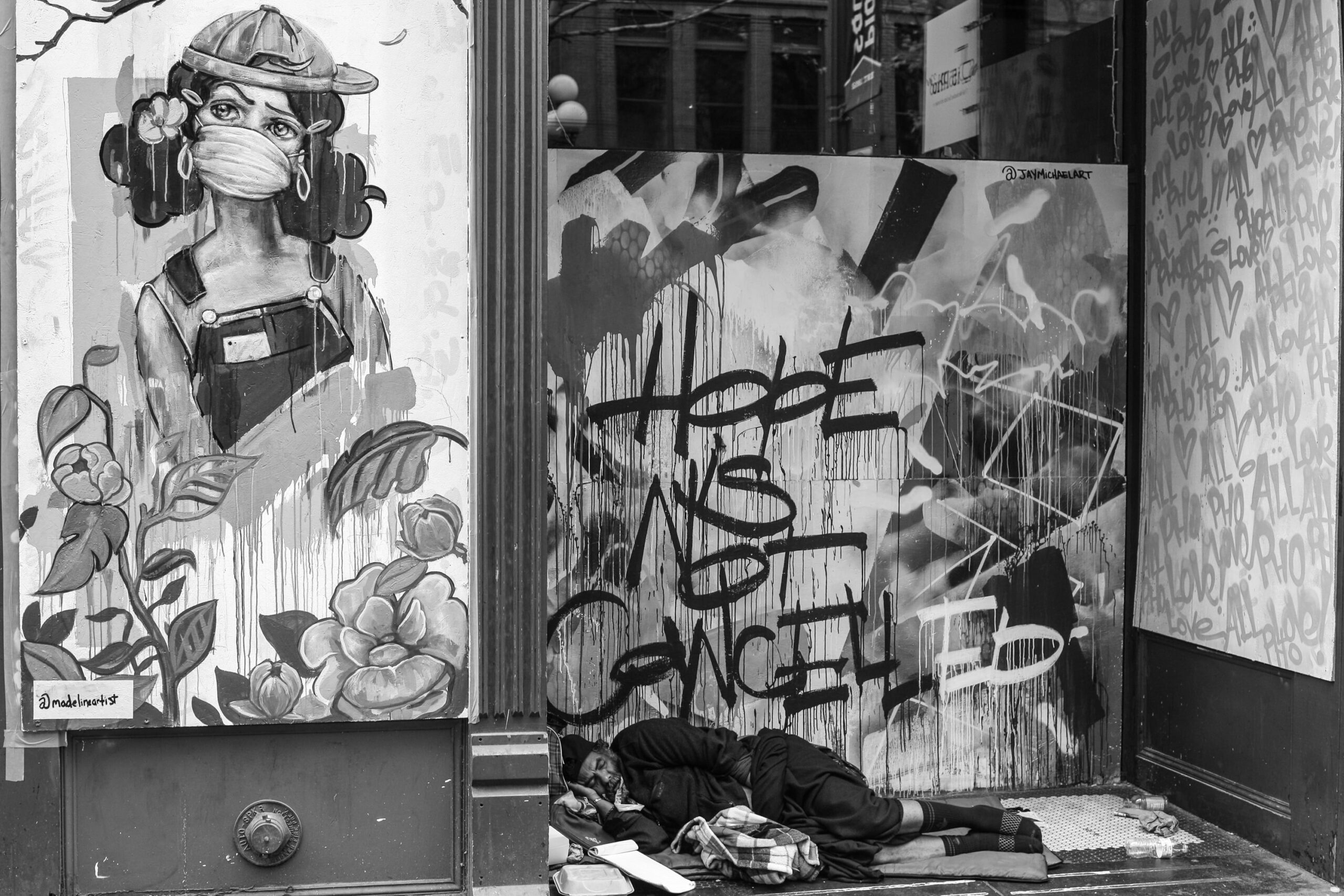Seattle has seen an influx of homelessness in recent years. In fact, many West Coast cities have experienced the same issue such as Portland, San Francisco, and Los Angeles. Earlier this year, a survey conducted in Portland’s metro area counted about 6,633 homeless, an increase from the last Point-In-Time surveys conducted over the last few years (Mann, 2022). In Spring of 2020, voters in Portland approved a $2.4 billion measure in support of housing services to help their city’s homeless population. So far, that measure has invested in shelter beds, street outreach, and support towards housing placements, while local government agencies have poured their support and investment into rental assistance programs, (Mann, 2022). These measures taken by Portland are a great example of what cities can do to help support their homeless population.
The state of California itself has more than 160,000 homeless, and both the cities of Los Angeles and San Francisco are taking measures in trying to tackle the issue. LA City Council has utilized new laws to help ban outdoor homeless encampments, and San Francisco mayor London Breed vowed to get aggressive on the city’s homeless crisis, but those measures are not exactly helping the issue, Cline, 2022). A step in the right direction for LA could come from some new initiatives the mayor has proposed. Karen Bass, the Mayor of Los Angeles recently said the city will launch ‘Inside Safe” a program that will utilize master leasing of buildings and hotels to provide housing for the homeless, which will give people the option to move inside at their choice as opposed to being forced or coerced into moving. Since Bass has issued a state of emergency on homelessness, she is allowed to spend more on housing support services rather than go through longer legislative processes through the city, (Smith, 2022) She is also pressing for faster processing of affordable housing applications to be completed within two months as opposed to the potential up to 9 months it usually takes.
In examining the homeless crisis around the country, many have asked why homelessness appears to be soaring at higher and faster rates than previously. There are actually many external factors that increase the chance of someone becoming homeless, and these factors have contributed to the increase in homelessness. The recent COVID-19 pandemic has played a significant role in terms of homelessness, as it had left many sick or without jobs as companies and businesses were forced to close or generated layoffs to their employees. Aside from the pandemic, other factors include mental health struggles coupled with drug addiction, disabilities affecting individual’s work options, evictions due to job loss, the rise in cost of living, gentrification in neighborhoods, and environmental factors such as growing up in poverty along with lack of access to resources and education. All of these issues have hit the city of Seattle greatly.
Seattle’s homeless crisis has created multi-faceted challenges for city and state officials. Since the pandemic, the visibility of homeless tents has risen by more than 50%, but even before the pandemic arose the city was already facing serious challenges in combating the issue. Currently, Seattle has over 2 million citizens, and as recently as 2020 at least 40,800 people in King County have noted experiencing homelessness for one night or all year, (Martin, 2020). The city of Seattle itself had initially declared a state of emergency for homelessness in 2015, and it has only increased since the Covid-19 pandemic, (City of Seattle).
Although Seattle offers a variety of employment with major companies to choose from such as Amazon, Microsoft, and Starbucks, who are all headquartered here, the growth has also contributed to costly rents around the city. We have witnessed costly increased rents over the years due to newly developed construction such as pricey condos in downtown and in rural neighborhoods, which has added to gentrification in areas such as the Central District, parts of Burien, West Seattle, South Park, and Georgetown. The influx of major tech-centered companies as well as real estate companies that specialize in new development play a major role in increasing rents in Seattle as well, as new homes are in high demand to accommodate the growing city.
Because of the changes in Seattle’s economic growth, affordable housing has become a deep challenge for residents in the city, who cannot afford to pay high rents. This certainly affects those who work minimum wage jobs, working college students, people on a fixed income, on disability, or minorities and immigrants who are on a passive income. According to the City of Seattle, there is a disproportionate ratio of homelessness that affects People of Color and more specifically Black and American Indian/Alaska Natives, who only make up 7% of the population but whose households are on the receiving end of homeless services at 35%. This has been attributed to race-based zoning and financial discrimination, (City of Seattle). The cost of living in Seattle is also 67.8% higher than the national US average, (Tran, 2022). To afford to rent a one-bedroom home in the city, the recommended yearly pay would have to be a little over $63,000 a year.
Along with these challenges, the city must face the reality of dealing with people who are in dire need of assistance to help them combat mental health disparities such as substance abuse and addiction which seem to plague a large portion of the homeless population. As someone who lives in the city, it’s disheartening to see people wandering the streets in distress or having a mental health crisis which sometimes leads to criminal activity unfortunately.
Anyone who has visited the city recently can attest to seeing numerous tents along the highways, in areas such as the Sodo District and Pioneer Square which have affected local businesses negatively. As a local citizen, I have seen many people put blame on the Seattle City Council and past mayors for their lack of attention and proper legislation to actually help our city get to a better place. The Seattle Police Department has also seen a decrease of officers in the past few years, and is currently short-staffed due to the rise in crime within the city. They place blame on the city’s soft approach to apprehending criminals or arresting those that are causing destruction to local properties around town.
In contrast to these challenges, there have been some major turning points in certain events and aid through local agencies that have placed emphasis on raising awareness on the issue. Most recently, Seattle’s rent moratorium through the pandemic helped keep people from being evicted which allowed families to stay afloat over the past few years. The city also implemented Covid-19 relief programs that helped with rental assistance for those affected by the pandemic. Backtracking to the summer of 2018, Seattle had received assistance from one of their hometown bands. Pearl Jam played two shows at Seattle’s Safeco Field and started a pledge to help combat homelessness. Their campaign was able to raise more than $11.5 million from corporate sponsors and local businesses from the events, along with their initial $1 million kick-off pledge. The proceeds were donated to charities around the city in support of homeless causes, (Rietmulder, 2018). This historic event is also outlined at Seattle’s Museum of Pop in the Pearl Jam exhibition.
Currently, the city is being run by new mayor Bruce Harrell since winning the mayoral election in November 2021. Many locals remain optimistic about Harrell’s approach in hopes of turning the city around. Harrell is an attorney and former member and President of the Seattle City Council and is of African-American and Japanese descent.
One of Harrell’s great challenges as mayor is to find solutions. Last year in May, Harrell released the “One Seattle Homelessness Action Plan” which plans to provide affordable housing, shelter, and support services for people who are in need. A small fraction of the budget will go towards encampment removal. During the summer, the Dockside Apartments in the Green Lake neighborhood were acquired by the Low Income Housing Institute to help homeless with permanent housing, “We know access to housing is both a symptom of and a solution to the homelessness crisis,” said Mayor Harrell, (Housen, 2022). So far, he has enacted measures to make progress in the right direction. Currently, Seattle has a budget of $153.7 million this year to spend on homelessness (City of Seattle). The city has also invested a quarter of a billion dollars for affordable housing projects for the year through the City’s Office of Housing, and plans to implement more affordable housing in high-cost living areas throughout the Seattle area. The city has also partnered with the King County Regional Homelessness Authority which is an independent agency aiming towards developing evidence-based strategies for homelessness in Seattle.
Surrounding rural cities such as Burien, and Tukwila are also taking steps into combating the homeless crisis such as building tiny villages in areas that will provide transitional housing. There are also newly built tiny homes in the Georgetown neighborhood of the city. Seattle has also acquired local hotels to help displaced people during the pandemic who face high health risks. Harrell has a goal of providing over 2000 units this year for the displaced and plans to continue working with state officials in the state capitol Olympia to pass initiatives and legislation to get that done. So far, Mayor Bruce Harrell has provided some hope for residents as he and his administration are working towards improvements by creating and mobilizing action plans for rapid housing, permanent housing, shelters, and support services for affordable housing. The issue of drugs and increased rents is yet to be fully combated. Locals are hoping that those issues will be addressed effectively by city officials to come.
Sources:
City of Seattle
One Seattle Homelessness Action Plan
Cline (2022)
https://www.opb.org/article/2022/03/11/liberal-us-cities-change-course-now-clearing-homeless-camps /
Cost of Living in Seattle. (Tran, 2022)
Cost of Living in Seattle, WA 2023 (apartmentlist.com)
Housen, Jamie, (2022). Office of the Mayor.
Mann (2022)
Tri-counties release 1st count of Portland area’s homeless population since 2019
Martin, Casey, (2021). https://www.kuow.org/stories/king-county-says-40-800-people-experienced-homelessness-at-some-point-in-2020
Seattle Times Staff. (2021).
See how Seattle’s homelessness crisis stacks up across the country and region
Los Angeles Times. (Smith, 2022).
Mayor Bass to launch program to move homeless people indoors – Los Angeles Times (latimes.com)
The Seattle Times. (Rietmulder, 2018).
$11.5M and counting, Pearl Jam’s Home Shows raise money to combat homelessness | The Seattle Times











